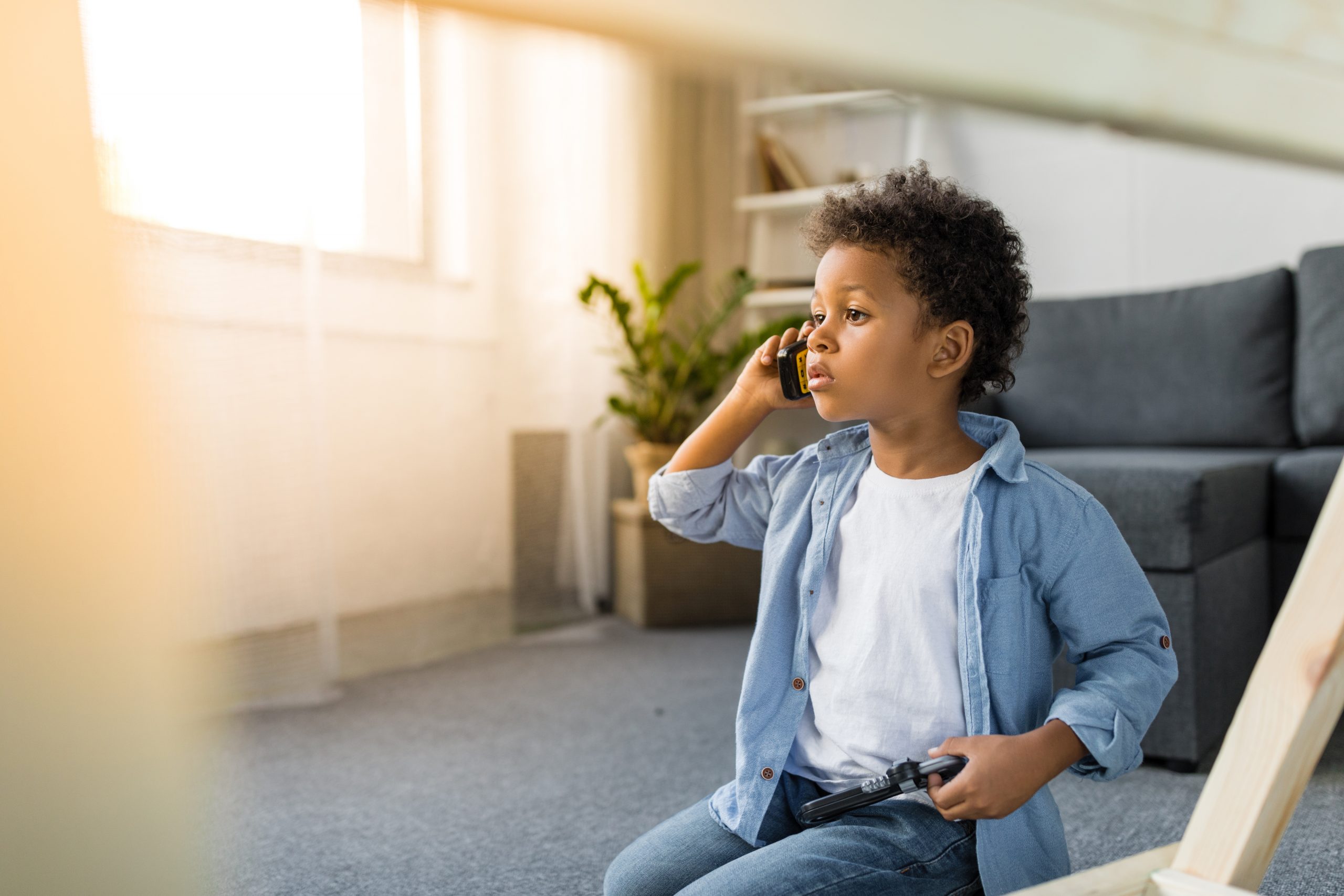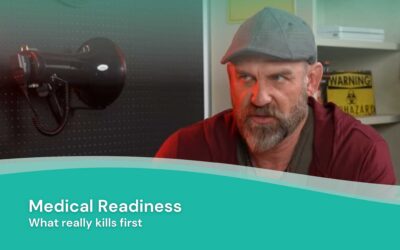
Medical and other forms of preparedness include teaching the youngest in your family or group
Teaching kids how to manage medical emergencies is crucial. It empowers them to take appropriate actions and potentially save lives. Even young children can be taught basic skills that could save themselves or others lives. A recent example of this was when a 4 year old was able to call 911 after his mother fell down the stairs. He sang the address to the 911 operator.
Emergencies are unplanned. Having a plan in place, even for the very young is an essential part of emergency preparedness.
When teaching children what to do in an emergency :
Stay Calm: Lead by example. If children see you are staying calm, they will tend to be also. Emphasize the importance of staying calm during emergencies, as it helps them (and you) think clearly and act more effectively.
Emergency Action Plan: Work together to create a family emergency action plan, outlining roles and responsibilities during different emergencies.
Make it a fun activity: And repeat, repeat, repeat. Repetition along with making learning an enjoyable activity will reinforce behavior and skills.
Teach children emergency skills organized by age groups:

Age 1 to 3:
Identify Trusted Adults: Teach children the names and roles of trusted adults, such as parents, caregivers, EMS workers or teachers, who can help in emergencies. Familiarize children with EMS services by planning a trip to the fire department and police station. Children tend to be afraid of strangers (with good reason) and have been known to hide in closets and under beds when a fire had broken out in their home.
Basic Safety Rules: Start introducing basic safety rules, like not touching dangerous objects or going near potentially hazardous areas. Teach boundaries, such as not going outside without a trusted adult, staying away from the stove, swimming pool and streets. They are still young to really understand some boundaries, however consistency and repeat guidance will reinforce desired behavior now and as they grow.

Age 4 to 6:
Call for Help: Teach kids how to call for help using a phone or by finding a nearby adult if they encounter an emergency. This age group can learn how to access 911 or other emergency numbers specific to your area. Instruct how to place call and rehearse. In addition, make it a game while in the car or traveling and at home to have them memorize and rehearse their home address. Along with this, if there is a home emergency, teach children how to lock and unlock doors to the home.
Identify Emergency Services: Introduce emergency services like 911 or local emergency numbers, and explain when to call them (e.g., fire, police, medical). Just like age 1-3, familiarize children with another scheduled trip to the local fire and police department. This will reinforce that they are there to help and can alleviate fear and anxiety during an emergency.
Teach children what to do in the case a stranger approaches them or if they get separated from the group during an outing. Provide them with a whistle and show them how and when to use it: if they are lost (such as camping or hiking) or if they feel threatened. Supply them with a whistle on a lanyard around their neck or in a secure pocket on their clothing.
Age 7 to 9:
Basic First Aid Skills: This age group can start acquiring skills such as how to clean scrapes and bandaging minor cuts and scrapes. Teach simple first aid skills like cleaning and bandaging minor wounds, applying ice packs for bumps, and recognizing when to seek adult help.
Know Home Address: Ensure kids know their home address and how to provide it clearly during emergencies or when calling for help.

Age 10 to 12:
With age comes more advanced skills and responsibility.
Introduce CPR for children and the Heimlich maneuver for choking emergencies. Many hospitals and recreation departments hold classes for this age group. Enroll them in the course, then role play after they have gone through the instruction to reinforce these skills.
Familiarize with basic first aid kit This age group is capable of understanding and using many items in the first aid kit, however their judgement may not be adequate for all items. For instance, topical ointments may not be a good idea to apply directly into an eye injury. Explore with them the items in the first aid kit and instruct them on what they may use in it. It would be a good idea to put 3 by 5 cards with pictures and scenarios as to what they are able to use in the kit. Be sure the child knows when to seek adult help when they or someone they are with is injured.
Emergency Contact List: Create an emergency contact list with important numbers, including parents, relatives, neighbors, and emergency services. In addition, have a list of medical conditions and medications readily available in case they need to contact emergency services.
Age 13 and up
Young teens and up can learn to recognize different emergencies. This age can also learn how and when to use an emergency medical kit- a kit with basic over the counter medications (antihistamines and pain relivers, etc) under prior supervision and guidance.
Stress the importance to not attempt emergency aid beyond their capabilities and how to know when to seek help.
Tasks in this age group include: what to do in medical emergencies- a non-responsive person, a broken bone, burns, uncontrolled bleeding etc. These advanced skills can be taught by programs throughout the country. Check your local area for classes near you. It is strongly advised that they take the class in person and not online. A quick google search of courses show some are online. This may be okay if renewing their cpr or other certifications, however for first time certification and instruction, in person experience is necessary.
Using First Aid Kits: Show them how to use all items in a basic first aid kit and what each item is used for. This age group should be mature enough to understand and provide basic first aid.
Advanced First Aid Skills: Teach more advanced first aid skills like applying pressure to control bleeding, treating burns, and stabilizing fractures or sprains. If an AED is available, have them take the AED portion of the CPR course at the same time.
Repetition, practice and supervision
Practice emergency scenarios through role-playing, so kids become familiar with the actions they need to take. Engage and make it a part of your preparedness plan. FEMA has a youth preparedness section you may want to check out for natural and manmade disasters.
Additionally, always supervise and guide children when practicing emergency skills to ensure their safety and understanding.
- Brooke Lounsbury, RN
Medical Content Writer
Lifesaving Medications
Recent Posts
Keeping you informed and safe.
Medical Readiness: What Really Kills First
When Disaster Strikes, It’s Not Hunger or Thirst That Takes the First Lives In every disaster zone, from hurricanes in the Caribbean to war zones in Ukraine, the pattern is the same. People worry about food and water, but it’s infection that kills first. A small wound...
Exploring Dr. William Makis’ Hybrid Orthomolecular Cancer Protocol: Focus on Ivermectin and Mebendazole/Fenbendazole
Exploring Dr. William Makis’ Hybrid Orthomolecular Cancer Protocol: Focus on Ivermectin and Mebendazole/Fenbendazole *Disclaimer: This article is for educational purposes and does not constitute medical advice. Always seek professional guidance.* In the evolving...
Be Prepared for Life’s Unexpected Moments
3 Reasons EVERYONE should have emergency medications avaiable. It's all about access—access to medications and care when you need it most. And when things happen outside of your control that access can disappear.Below are 3 examples of how easily this access can be...















